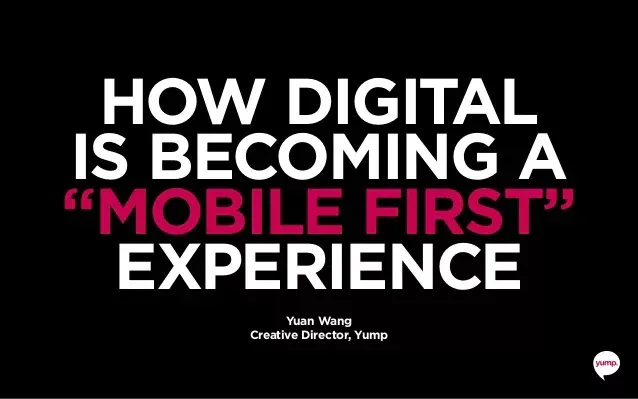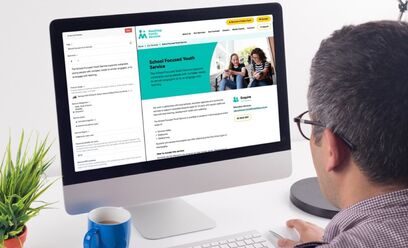As we head into the next financial year, it’s time to examine how digital has increasingly become a mobile-first experience. By examining the latest mobile statistics in Australia (courtesy of IAB Australia) as well as global mobile marketing trends (from Google’s Consumer Barometer and Think with Google), we uncovered 8 essential mobile marketing insights that will help companies and organisations adopt a mobile-first approach, which puts handheld devices at the forefront of both strategy and implementation.
Mobile consumption and usage have never been higher.
The latest available mobile statistics in Australia from IAB Australia (Mobile Ratings September 2015) on smartphone and tablet ownership, Internet surfing trends, as well as total time spent on devices, show that both in Australia and globally, consumption and usage of mobile devices continues to increase rapidly. In contrast, time spent and sessions viewed on desktop and laptop devices, though still a sizable proportion, have either stagnated or declined slightly in the last few years.

Smartphone ownership in Australia increased from 11.1 million in 2013 to 15.3 million in mid-2015. During the same period, tablet ownership increased from 6.3 million to 11.2 million. Smartphone and tablet make up 63% of total time spent on devices in September 2015.


This is not just an Australian phenomenon. For the United States, the statistics below show how time spent per adult user per day on mobile has increased from 12% of total time spent on devices in 2008 to 51% in 2015, a more than three-fold increase over 7 years.

For millennials, mobile is a necessity in everyday life.
Targeting millennials means a mobile strategy is no longer optional or a nice-to-have. The Google Consumer Barometer Survey from 2014/2015 concludes that 40% of millennials research their purchases on smartphones, more than twice as many as people ages 35+.

Mobile has more impact on consumer actions than television.
Based on findings from the 2015 Brand Building on Mobile Survey conducted by Google and Ipsos, more people visited the company’s store or website, made a purchase, discussed the company with someone else, shared an ad, and had a positive opinion about the company after viewing branded content or advertising on smartphones than those who did on television.

Don’t just “build an App”.
Avoid jumping to solutions and you will maximise the opportunities on offer via mobile. Mobile marketing is not just about building Apps. You can integrate with existing Apps, build a mobile-friendly website, target mobile search, buy mobile or in-App advertising, create branded content for Apps or run campaigns using social Apps such as Instagram and Snapchat.

You can also utilise mobile in conjunction with in-store marketing strategies. Google’s 2013 Mobile In-Store Research found that 84% of smartphone shoppers turn to their mobile phone to help them shop while in a store.

Design specifically for the mobile experience.
A study conducted jointly by Google and Galaxy in June 2015 discovered that 74% of Australians rely on their phones at least as much as they rely on their desktops, when searching for information, ideas or advice.

This means we have to understand what consumers do in order to design the best mobile experience. Consider the following factors: screen size, orientation, navigation, scrolling, content prioritisation, page load time, touch, gestures and voice activation.

Anticipate the micro-moments and provide a relevant and useful experience.
Decisions are made and preferences are shaped during micro-moments. In these moments, consumers want to explore, research, look for a local business, complete a task, try something new or need help deciding what to buy and how to buy. They are drawn to companies and brands that deliver on these needs with an experience that is relevant and useful.


A great mobile experience loads fast.
Don’t sacrifice performance for better aesthetics, new functionality or more content. A user-centric and fast-performing mobile experience, with a low page load time, increases sales and engagement. Kissmetrics.com reports that 40% of people abandon a website that takes more than 3 seconds to load and a 1 second delay in page response can result in a 7% reduction in conversions.
Mobile-first doesn’t mean degrading the large screen experience.
Despite the increasing prevalence of handheld devices, desktop and laptop devices are still used by many people to perform critical tasks. In fact, according to the 2014/2015 Consumer Barometer Survey, 81% of surveyed Internet users still use computers to perform product research (as opposed to 31% who use smartphones) and 80% of them still rely on computers to make their purchase (as opposed to 10% who use smartphones).

People still prefer completing their purchases on desktop and laptop devices rather than mobile devices. So digital marketers, strategists, designers and developers should not fail to provide an equally optimised large screen experience.
Are you applying our mobile marketing insights to designing a better customer experience? Don't miss our blog "10 Ways to Supercharge Your Customer Experience Design" with more than 150,000 Slideshare views and counting. "How Digital Is Becoming A Mobile-first Experience" can be viewed and downloaded from Slideshare.net:
 How Digital Is Becoming A Mobile First Experience from Yuan Wang" style="height: 100%;
width: 100%;object-fit: cover;object-position: 50% 50%">
How Digital Is Becoming A Mobile First Experience from Yuan Wang" style="height: 100%;
width: 100%;object-fit: cover;object-position: 50% 50%">
How Digital Is Becoming A Mobile First Experience from Yuan Wang
By Yuan Wang
Yuan is the strategy and UX lead at Yump, digital agency Melbourne and Sydney. We have a keen passion and proven record in driving user engagement across digital channels and creating better customer experiences for government, education, retail, corporate and not-for-profit organisations across Australia. Our user-centred approach delivers innovative thinking and measurable results for companies, businesses and organisations. We analyse the latest mobile statistics in Australia and the world, bringing on-trend usage insights to our projects and partnerships.










